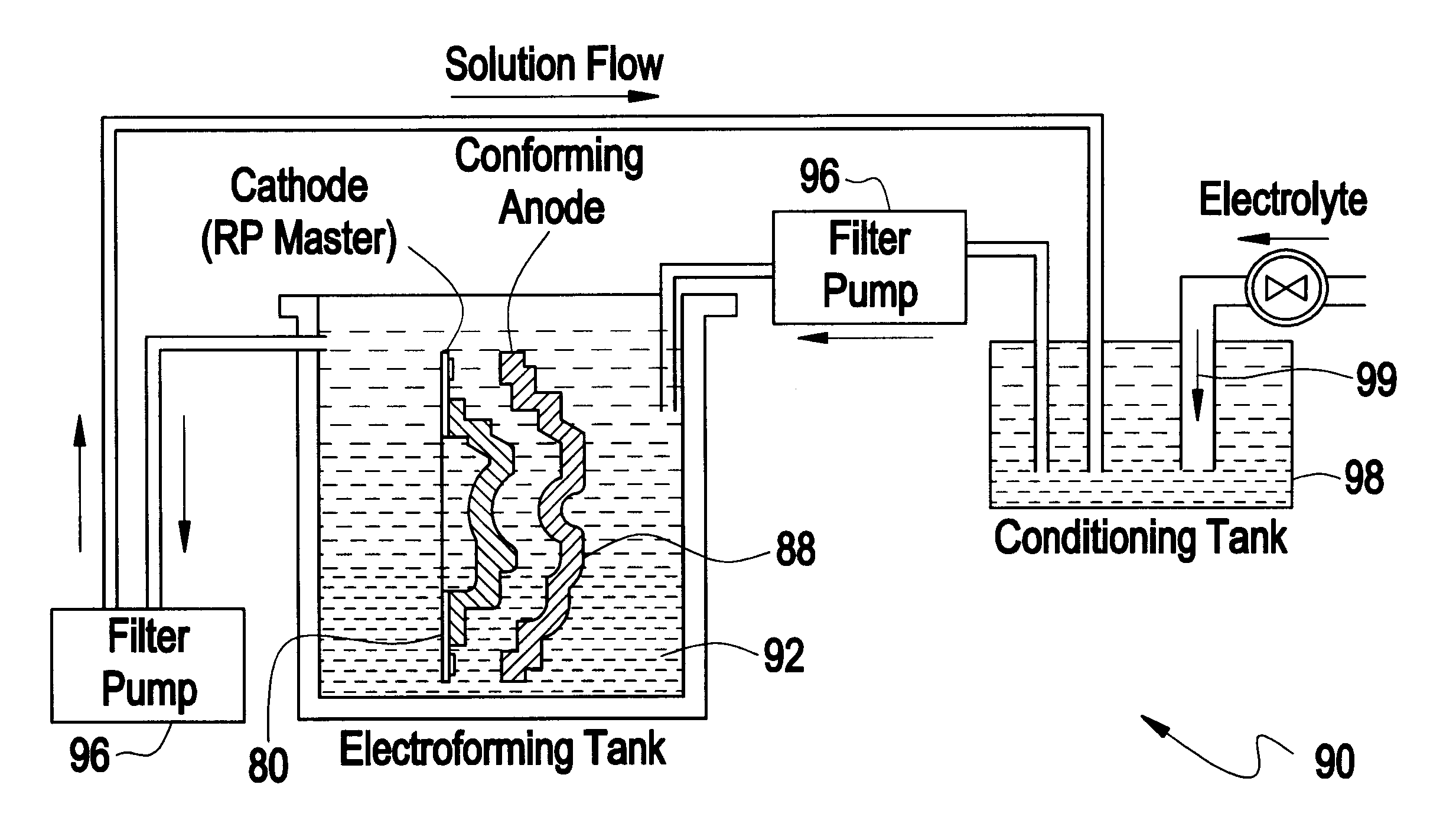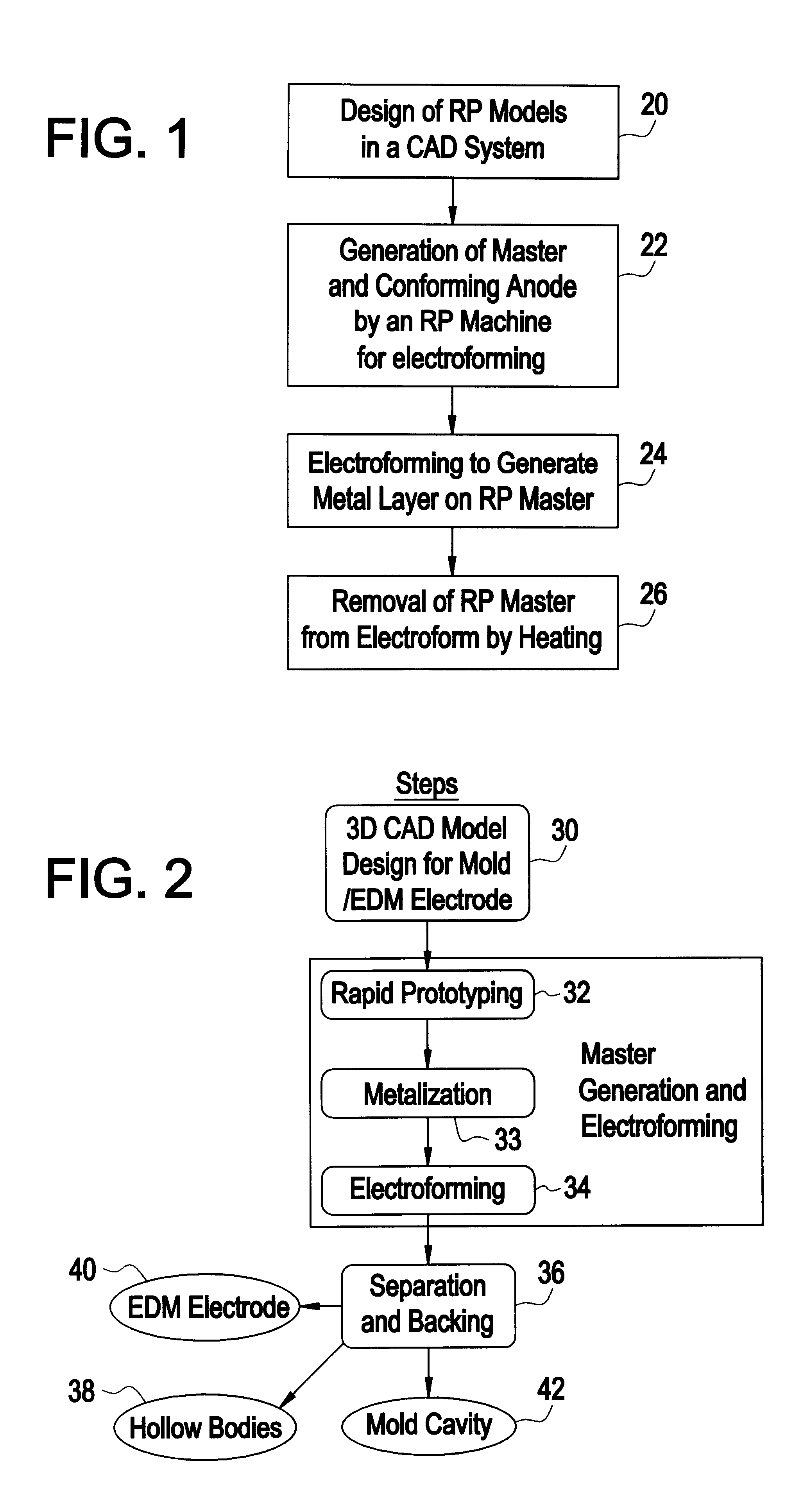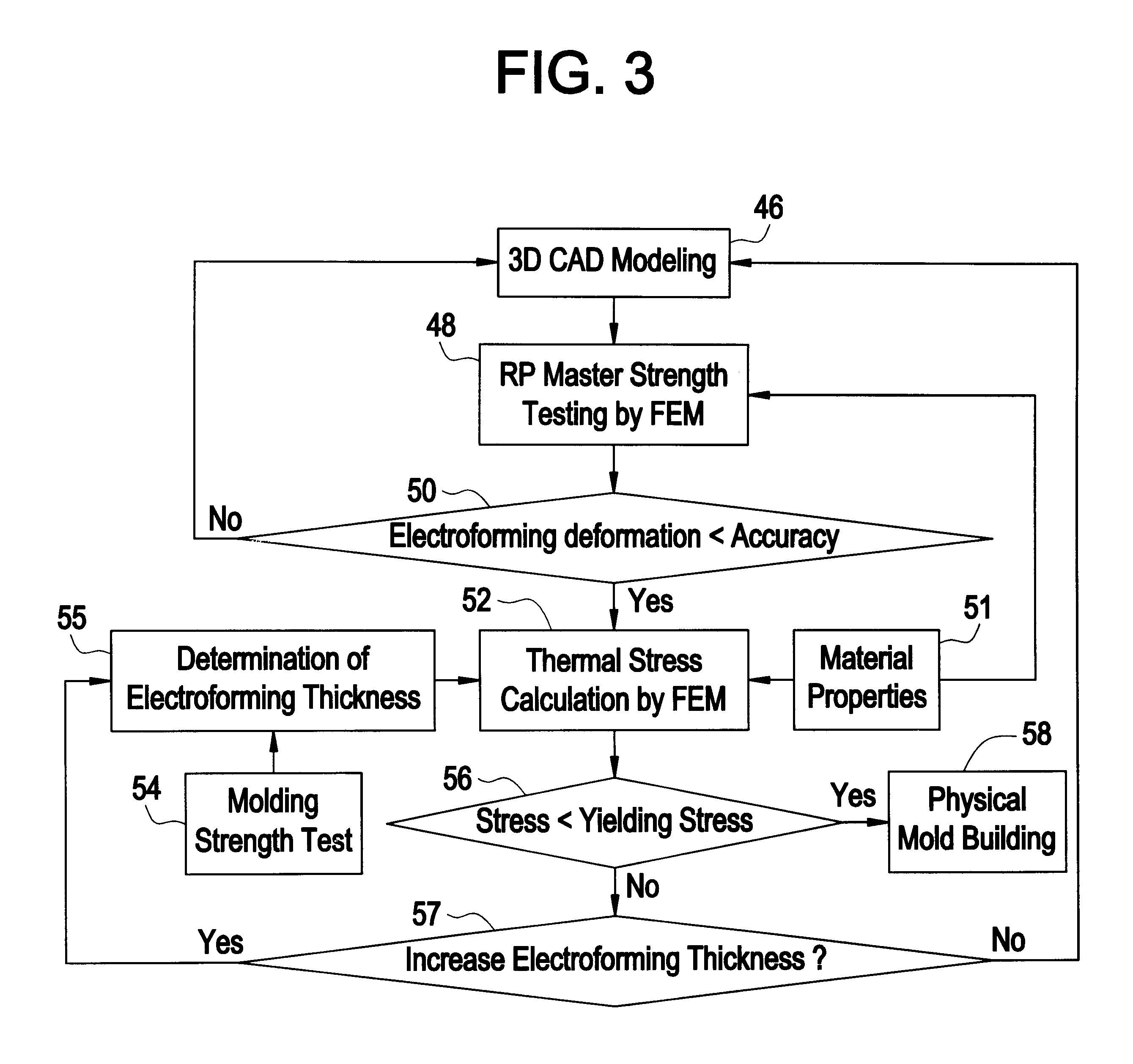Rapid production of engineering tools and hollow bodies by integration of electroforming and solid freeform fabrication
a technology of electroforming and freeform fabrication, which is applied in the direction of manufacturing tools, foundry patterns, moulding apparatus, etc., can solve the problems of difficult separation of electroforming from master, difficulty increases, and development of electroforming is the manufacturing of master, so as to minimize stress on electroformed materials during burnout, and the effect of rapid prototyping design and manufacturing
- Summary
- Abstract
- Description
- Claims
- Application Information
AI Technical Summary
Benefits of technology
Problems solved by technology
Method used
Image
Examples
example 1
Solid RP Master (SL Master) with Chemical Dissolution Methods.
Experiments were first tried on chemical dissolution of the RP master for separation of electroformed metal from the RP master. The material of the RP master is SL resin (an epoxy resin used for SL RP machine). Acetonic solution is the most powerful chemical solution for dissolving the SL resin so is was used to dissolve the solid SL master after it is nickel electroformed. It was found that dissolving the SL master in this chemical solution to separate the metal shell by causing delamination of the interface layer may be possible but the time taken is very excessive. A nickel electroformed SL part, like the one shown in FIG. 18B, to dissolve the SL master, took five days, but the dissolution of the SL part was just a small portion and the SL master can not be removed. Even using a web structure inside the RP master, the time taken for dissolving the RP master was still not desirable. So other separation approaches were t...
example 2
After the failure of separation of RP master from metal by chemical dissolution, the idea of burnout of the RP master was tried. A solid SL part, as shown in FIG. 18A, was electroformed with nickel at a plating thickness of 2 mm. Then the SL master was burned at an oven with temperature at 560.degree. C. After two hours, the SL part was completely burnout, but the electroform was deformed significantly. The nickel shell was measured using a Coordinate Measuring Machine (CMM) and compared the data with the original SL part. The following table 3 is data we measured using the dimensions shown in parts A and B of FIG 20. As the data shown, the dimensional deviations are too large to be accepted for molding accuracy requirement after the burnout of the SL master. This is because the thermal stress induced by thermal expansion of the SL master deformed the electroform. If the SL part were larger than this one, the thermal expansion problem would have been more s...
example 3-4
Web Structure Inside the RP Master to Reduce the Thermal Stress
Since it was found that the solid RP master will deform the electroform during the burnout process, a web structure was then tried in the next experiment. SL masters as shown in example 3 (FIGS. 21A-B) and example 4 (FIGS. 22A-B) were built. The thickness of the wall enveloping the web structure is 1 mm. The web structure consists of interconnected hexagons with a side length of 3 mm and skin width of 0.8 mm. The master of example 3 was electroformed with 1 mm thick of copper inside the cavity (for EDM electrode). As the picture shows, the web structure is so weak that the electroforming stress cracked the SL master during the electroforming process. As shown in example 3, the corners of the SL master were cracked. The SL master of example 4 was nickel electroformed with a thickness of 2 mm. The deformation of the webbed SL by electroforming stress was so large that it could be observed visually and did not need to be me...
PUM
| Property | Measurement | Unit |
|---|---|---|
| Temperature | aaaaa | aaaaa |
| Density | aaaaa | aaaaa |
| Pressure | aaaaa | aaaaa |
Abstract
Description
Claims
Application Information
 Login to View More
Login to View More - R&D
- Intellectual Property
- Life Sciences
- Materials
- Tech Scout
- Unparalleled Data Quality
- Higher Quality Content
- 60% Fewer Hallucinations
Browse by: Latest US Patents, China's latest patents, Technical Efficacy Thesaurus, Application Domain, Technology Topic, Popular Technical Reports.
© 2025 PatSnap. All rights reserved.Legal|Privacy policy|Modern Slavery Act Transparency Statement|Sitemap|About US| Contact US: help@patsnap.com



